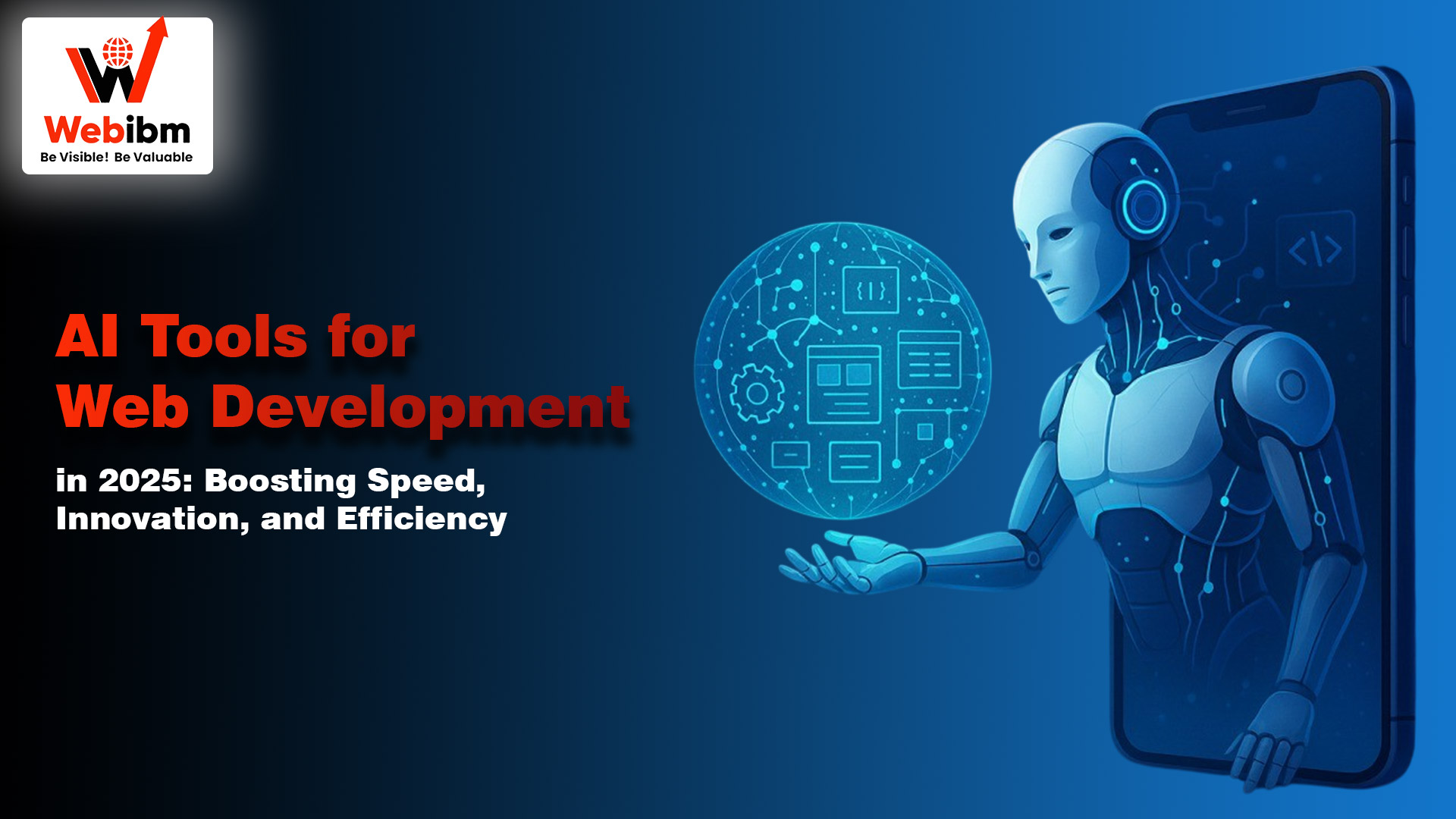

Rohit Shah
2025-09-24
The world of web development is evolving faster than ever, and artificial intelligence (AI) is at the heart of this transformation. By 2025, AI-powered tools are reshaping how websites are designed, coded, and maintained. These tools not only accelerate development but also enhance efficiency, reduce repetitive tasks, and free up developers to focus on creativity and problem-solving.
Unlike traditional development that relies heavily on manual coding, AI tools streamline workflows through automation, predictive coding, and natural language processing. For example, a developer no longer needs to write every line of code manually; AI assistants can suggest or even auto-generate functional blocks of code. This hybrid approach allows professionals to combine speed and innovation without sacrificing quality.
AI doesn’t replace human judgment—it supports it. Developers still bring business insights, creativity, and critical thinking, while AI ensures faster and more precise execution.
Here are the leading AI tools transforming the web development process in 2025:
GitHub Copilot remains a game-changer for developers. Integrated directly into editors like VS Code, it provides real-time code suggestions across multiple languages including Python, JavaScript, and TypeScript. By learning from millions of public repositories, Copilot helps reduce errors, accelerates API development, and assists with debugging.
Why it’s useful: Saves time, reduces mistakes, and improves workflow efficiency by acting as a virtual coding partner.
Tabnine is designed to learn your unique coding style and adapt to your project’s standards. Supporting languages like Rust, Go, and Kotlin, it integrates seamlessly with platforms like GitHub and GitLab. Tabnine even works offline, making it reliable during connectivity issues.
Why it’s useful: Customizes suggestions to team coding standards, ensures privacy, and delivers AI-driven autocomplete features.
For businesses and non-developers, Wix ADI is one of the most user-friendly tools. By answering simple questions, users can generate fully functional websites in minutes. The AI suggests layouts, colors, and content tailored to specific industries.
Why it’s useful: Ideal for small businesses and entrepreneurs who want fast, professional websites without coding knowledge.
Vercel integrates AI-driven capabilities that convert plain prompts into working front-end components. This dramatically cuts development time, especially for startups aiming for speed-to-market.
Why it’s useful: Simplifies UI component creation and accelerates front-end design.
Google’s Gemini AI is built as a “thinking model,” offering advanced reasoning for solving complex coding challenges. It enhances accuracy, provides contextual suggestions, and assists developers in tackling challenging logic problems.
Why it’s useful: Provides deep insights for high-level development problems where precision is critical.
Wizard converts hand-drawn sketches or mockups into functional digital interfaces. Designers can quickly test ideas and transform prototypes into interactive screens.
Why it’s useful: Perfect for rapid prototyping and collaboration between developers and designers.
Builder.io combines AI with a no-code platform, allowing developers and marketers to design responsive web pages visually. With AI features, users can generate content blocks, optimize layouts, and improve performance.
Why it’s useful: Bridges the gap between developers and marketers by enabling quick site edits without technical expertise.
Durable uses AI to create websites and marketing content in seconds. It’s tailored for freelancers and small businesses that need a digital presence instantly.
Why it’s useful: Provides instant websites with AI-generated content and design customization.
TeleportHQ leverages AI to automate UI creation. It supports real-time collaboration, making it excellent for distributed development teams.
Why it’s useful: Boosts teamwork efficiency and streamlines UI design.
Framer offers AI-powered website generation from plain text prompts. It’s perfect for creatives who want to launch sleek, responsive websites with minimal effort.
Why it’s useful: Converts text ideas into professional websites, saving time for designers.
AI tools for web development in 2025 are not replacing developers—they are empowering them. By handling routine tasks, these tools allow professionals to focus on innovation, strategy, and user experience. Whether you’re a seasoned developer or a small business owner, AI-powered platforms provide the speed and flexibility needed to thrive in today’s competitive digital landscape.